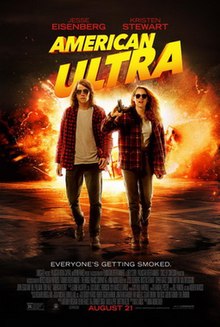
Released: August 28th,
2015
Rated: PG-13
Distributor: Roadside Attractions
Starring: Chiwetel Ejiofor, Chris Pine, Margot
Robbie
Directed by: Craig Zobel
Written by: Nissar Modi
Personal Bias Alert: likes Zobel, can handle a slow pace
9 of 10
What
a wonderfully unusual little film. A
thriller with no action, a post-apocalypse with no explanation, and a faith
with no judgement. That’s only
scratching the surface of this little gem from director Craig Zobel, whose
previous film, Compliance, was another
thriller that pushed people in all the right ways. Zobel doesn’t make easy films, that’s for
sure, but he does portray some of the smartest and most riveting dives into
human nature, a man who seems to be part psychologist and part auteur.
Z for Zachariah is about the tentative interactions
between three strangers stranded in a protected valley after a nuclear
event. Survivors seem to have been few
and far between immediately after the event and now are all but gone. The girl, Ann (Margot Robbie), has lived in
the valley her whole life and is startled by the appearance of Loomis (Chiwetel
Ejiofor). They are two quite different
people, she a young preacher’s daughter and he an accomplished civil engineer,
but they ban together all the same. Eventually,
Chris Pine’s Caleb enters the mix, and their carefully constructed life is
thrown into disarray.
That’s
not to say that Caleb is a bad guy; Ann and Loomis are cautious with him, but
they are cautious with each, as well. Who
the two men really are is what drives the narrative tension, and the literal
inescapability of their situation keeps the question ever-present. What would happen if even one of them shows a
dark side could be devastating, the thought of which keeps all three survivors constantly
on guard and in check. The sort of
complex, distinct personalities that each one of them brings to the table,
along with the unspoken perils of their relationship, could only be pulled off
by a team at the top of their game, and lightning was caught for Zachariah. Zobel, as already mentioned, is a delicate director
when it comes to molding such material, and writer Nissar Modi, with only her
second produced screenplay, shows an incredible ear for minimal but loaded
dialogue. On the technical side, cinematographer
Tim Orr captures their mountainous Eden with a cold beauty, and Heather
McIntosh adds a prominent score that keeps the tension simmering. Ejiofor and Pine knock it out of the park in
roles that are very close to their usual type, but it’s Robbie who really pins
the whole thing down. What’s left of the
world comes to revolve around Ann, and Robbie must make this fully-formed
person a vessel for all the film’s conflicts.
That she manages this without making the audience turn on her is
astounding, and it’s one of the best (and most complicated) performances by an
actress this year.
The
film does take its time letting these dynamics play out, and the slow style
will certainly turn off some. But those
who do like this sort of deep dive will find a rich social palette playing out
before them, and the microcosm this little trio becomes delves into the good
and the bad that society has to offer.
The ending is a slight disappointment, trailing off to a conclusion that
seems too easy when compared to the rest of the film. Still, the meaning of that last scene, like the
earlier parts of the film, isn’t entirely clear. Your own judgements will come into play, and a
film that lays out so many aspects of humanity while still allowing you the
space to react is a challenge well worth taking.
Other
Notes:
Ø It’s
not all as serious as I make it seem.
There’s some majorly funny lines:
“Even at the end of the world she isn’t going to drink no damn cherry
soda!”
Ø I
wouldn’t change a single thing before the last fifteen minutes.
Ø This
isn’t playing in a theater near me, so I caught it on demand. I’ve watched it twice, and the film doesn’t
fade on the second viewing.









